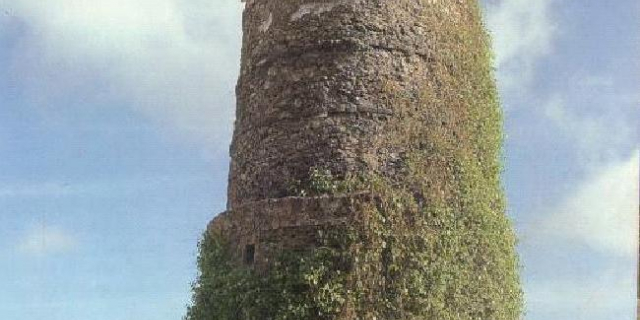Somalia
Context of Somalia
Somalia, officially the Federal Republic of Somalia (Somali: Jamhuuriyadda Federaalka Soomaaliya; Arabic: جمهورية الصومال الفيدرالية), is a country in the Horn of Africa. The country is bordered by Ethiopia to the west, Djibouti to the northwest, the Gulf of Aden to the north, the Indian Ocean to the east, and Kenya to the southwest. Somalia has the longest coastline on Africa's mainland. Its terrain consists mainly of plateaus, plains, and highlands. Hot conditions prevail year-round, with periodic monsoon winds and irregular rainfall. Somalia has an estimated population of around 17.1 million, of which over 2 million live in the capital and largest city Mogadishu, and has been described as Africa's most culturally homogeneous country. Around 85% of its residents are ethnic Somalis, who have historically inhabited the country's north. Ethnic minorities are largely concentrated in the south. Th...Read more
Somalia, officially the Federal Republic of Somalia (Somali: Jamhuuriyadda Federaalka Soomaaliya; Arabic: جمهورية الصومال الفيدرالية), is a country in the Horn of Africa. The country is bordered by Ethiopia to the west, Djibouti to the northwest, the Gulf of Aden to the north, the Indian Ocean to the east, and Kenya to the southwest. Somalia has the longest coastline on Africa's mainland. Its terrain consists mainly of plateaus, plains, and highlands. Hot conditions prevail year-round, with periodic monsoon winds and irregular rainfall. Somalia has an estimated population of around 17.1 million, of which over 2 million live in the capital and largest city Mogadishu, and has been described as Africa's most culturally homogeneous country. Around 85% of its residents are ethnic Somalis, who have historically inhabited the country's north. Ethnic minorities are largely concentrated in the south. The official languages of Somalia are Somali and Arabic. Most people in the country are Muslims, the majority of them Sunni.
In antiquity, Somalia was an important commercial center. It is among the most probable locations of the ancient Land of Punt. During the Middle Ages, several powerful Somali empires dominated the regional trade, including the Ajuran Sultanate, the Adal Sultanate, and the Sultanate of the Geledi.
In the late 19th century, Somali Sultanates like the Isaaq Sultanate and the Majeerteen Sultanate were colonized by both the Italian and British Empire. European colonists merged the tribal territories into two colonies, which were Italian Somaliland and the British Somaliland Protectorate. Meanwhile, in the interior, the Dervishes led by Mohammed Abdullah Hassan engaged in a two-decade confrontation against Abyssinia, Italian Somaliland, and British Somaliland and were finally defeated in the 1920 Somaliland Campaign. Italy acquired full control of the northeastern, central, and southern parts of the area after successfully waging the Campaign of the Sultanates against the ruling Majeerteen Sultanate and Sultanate of Hobyo. In 1960, the two territories united to form the independent Somali Republic under a civilian government.
Siad Barre of the Supreme Revolutionary Council seized power in 1969 and established the Somali Democratic Republic, brutally attempting to squash the Somaliland War of Independence in the north of the country. The SRC subsequently collapsed 22 years later, in 1991, with the onset of the Somali Civil War and Somaliland soon declared independence. Somaliland still controls the northwestern portion of Somalia representing just over 27% of its territory. Since this period most regions returned to customary and religious law. In the early 2000s, a number of interim federal administrations were created. The Transitional National Government (TNG) was established in 2000, followed by the formation of the Transitional Federal Government (TFG) in 2004, which reestablished the Somali Armed Forces.
In 2006, with a US-backed Ethiopian intervention, the TFG assumed control of most of the nation's southern conflict zones from the newly formed Islamic Courts Union (ICU). The ICU subsequently splintered into more radical groups, including jihadists al-Shabaab, which battled the TFG and its AMISOM allies for control of the region. By mid-2012, the insurgents had lost most of the territory they had seized, and a search for more permanent democratic institutions began. Despite this, insurgents still control much of central and southern Somalia, and wield influence in government-controlled areas, with the town of Jilib acting as the insurgents' de facto capital. A new provisional constitution was passed in August 2012, reforming Somalia as a federation. The same month, the Federal Government of Somalia was formed and a period of reconstruction began in Mogadishu, despite al-Shabaab frequently carrying out attacks there.
Somalia's GDP per capita is one of the world's lowest, and it belongs to the least developed country group. In 2019, Somalia had the lowest HDI in the world, and in the same year, 69% of Somalia's population was living below the poverty line. As of 2020, Somalia is placed the second highest in the Fragile States Index. It has maintained an informal economy mainly based on livestock, remittances from Somalis working abroad, and telecommunications. It is a member of the United Nations, the Arab League, African Union, Non-Aligned Movement, and the Organisation of Islamic Cooperation.





















![Cliff Kemper[2] - CC BY-SA 2.0](/sites/default/files/styles/640x320/public/2022-03/Serengeti_gazelles.jpeg?h=ead717b0&itok=JsZMti_M)


